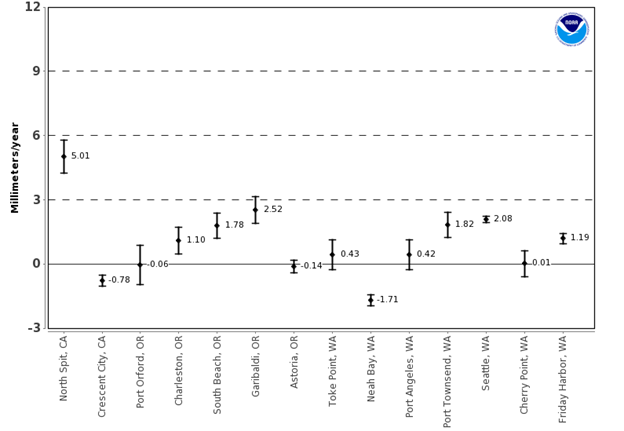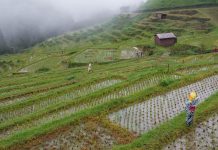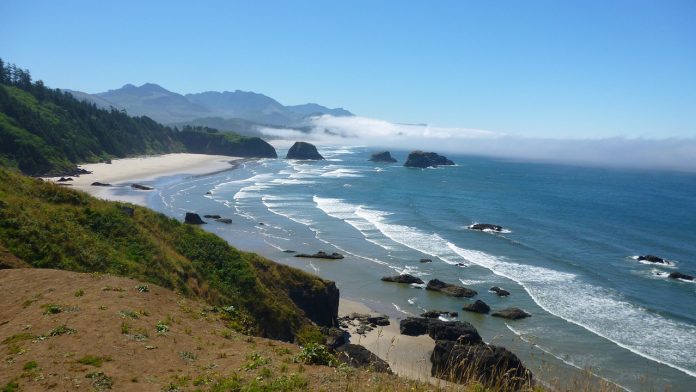A recent article posted by Oregon Public Broadcasting (OPB), titled “Climate change will keep hitting Oregonians hard, but the exact impact will depend on where you live,” claims that Oregon will be impacted severely on multiple fronts by climate change. Areas of concern include increased wildfires, sea level rise, and water shortages, among others. This is mostly false, as many of the problems listed are not worsening and those that are have nothing to do with climate change.
OPB writes that different regions of Oregon will face different effects from climate change, which is reasonable; coastal communities will have to worry about sea level more than those in Eastern Oregon, for example. But the caveats listed by OPB are interesting. The story doesn’t just discuss geographic and natural climate differences, but also differing effects based on demographics, such as, “how many people live there, and how much money their local governments have on hand.” Those two variables, and others like population growth and relative incomes, are totally independent of long-term climate change and even short-term weather events.
Regardless, the article goes on to make several false claims regarding the direct effects of climate change:
“The Oregon Coast faces sea-level rise, algal blooms and shellfish biotoxins. The northern Willamette Valley faces heat waves, higher landslide risks and increased water demands as the population grows. Northeastern Oregon faces longer fire seasons, scorched crops and increasing numbers of destructive pests.”
For the sake of brevity, we will not go into each in assertion made in this post, but almost every one of these supposed hazards are overblown at best, and or simply not occurring, at worst.
Beginning with sea level rise, the average absolute sea level rise globally is about 1.7+/-0.3 millimeters per year. Two out of the five available National Oceanic and Atmospheric Administration (NOAA) sea level monitoring stations in Oregon are slightly above that rate, at 1.78 +/- 0.58 and 2.52 +/- 0.61 mm/year or The rest are below the average global rate. These rates equate to a rise of about 0.58 ft and 0.83 ft over the course of 100 years, respectively (See chart below).

Monitoring stations at Port Orford and Astoria both show negative sea level rise, which means land is likely rising faster than absolute sea levels, making a net drop in relative sea level.
These are hardly unmanageable rates of change, the regions affected have plenty of time to react to less than 3 mm per year. Even the highest rate of sea level rise measured by NOAA in Oregon is well below the 1.4 to 2.75 feet of average global sea level rise forecast by the Intergovernmental Panel on Climate Change in its most recent report.
This is not the first time OPD has made false claims about heat waves, increased water demand, scorched crops, and pests. Climate Realism previously debunked these threats to Oregon agriculture in “Relax Oregon, Climate Change Is Not Increasing Drought, Flooding or Heatwaves,” and in “No, OPB, Climate Change is Not Taking a Toll on Oregon Farmers,” the latter showing that not only has precipitation not been a problem for the state, but crop production has been increasing, with an upsurge of major crops produced almost every year. Hazelnut production, for example, exploded 149 percent since 1999.
Regarding wildfire, OPB reports that Oregonians say it’s harder to go hiking and other outdoors activities because of wildfire smoke and heat. Again, the data does not support the anecdotal claims of select hikers cited in OPB’s story. In this case, the perception of hikers simply doesn’t match reality. Except for two years of outliers in 2020 and 2021, the Oregon Department of Forestry’s own data show that there has not been any trend in wildfire burn acreage. (See figure below)

Oregonians are not under increasing threat from climate change, even if they feel like they are. In this case, their reported experience of suffering the effects of climate change is more likely due to media coverage wrongfully attributing every period of unpleasant weather or wildfire to climate change, and not because these phenomena are actually worsening. OPB is a big part of the problem, pushing the false narrative that a climate crisis occurring in Oregon. A quick search of their website shows more than 7,000 results for the term “climate change.” Hiding or obfuscating the real data, which shows the unalarming truth about modest climate change, is journalistic malfeasance. OPB should quit misleading its audience. The best evidence, in the form of real-world data, show that Oregonians face no climate crisis.
























It’s deeply disappointing that nearly all mass media persists in misinformation and fear-mongering. Will this never end?
But why does this article seem to go along with the idea that sea level change has anything to do with climate? Coastal erosion yes, climate no.
Thank you, Linnea, for another excellent piece debunking the bogus manmade climate change narrative. You always have your analyses back with reliable facts and stats, that I try to refer to whenever possible.